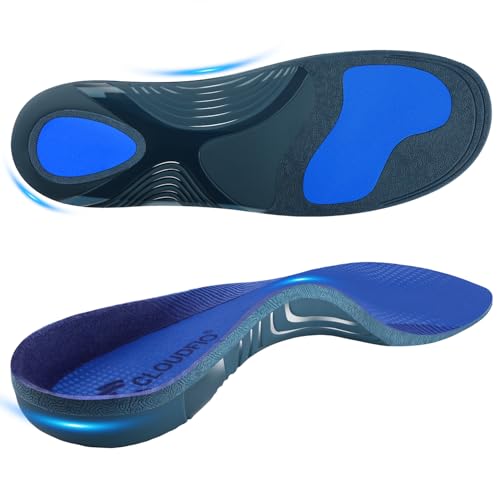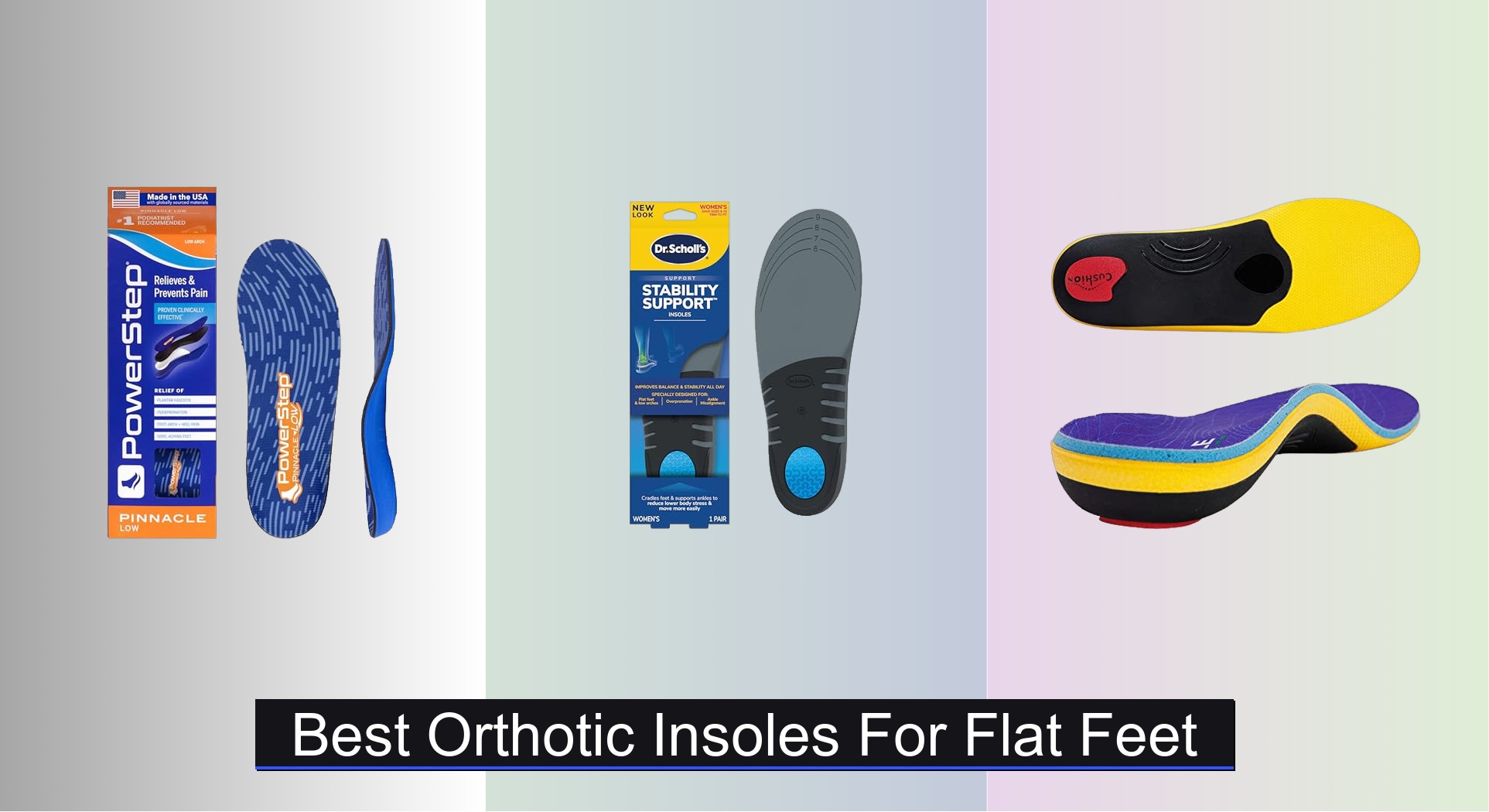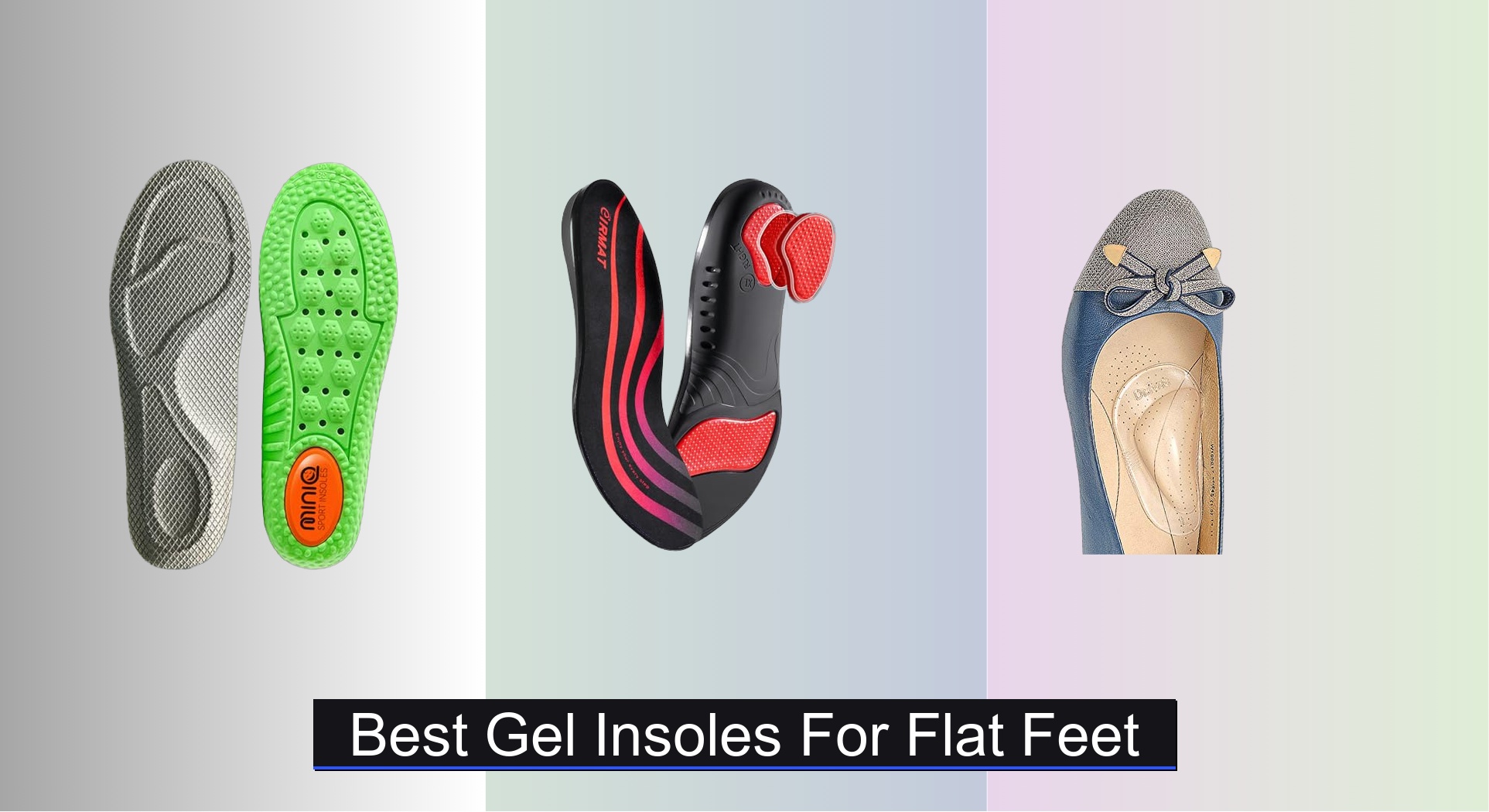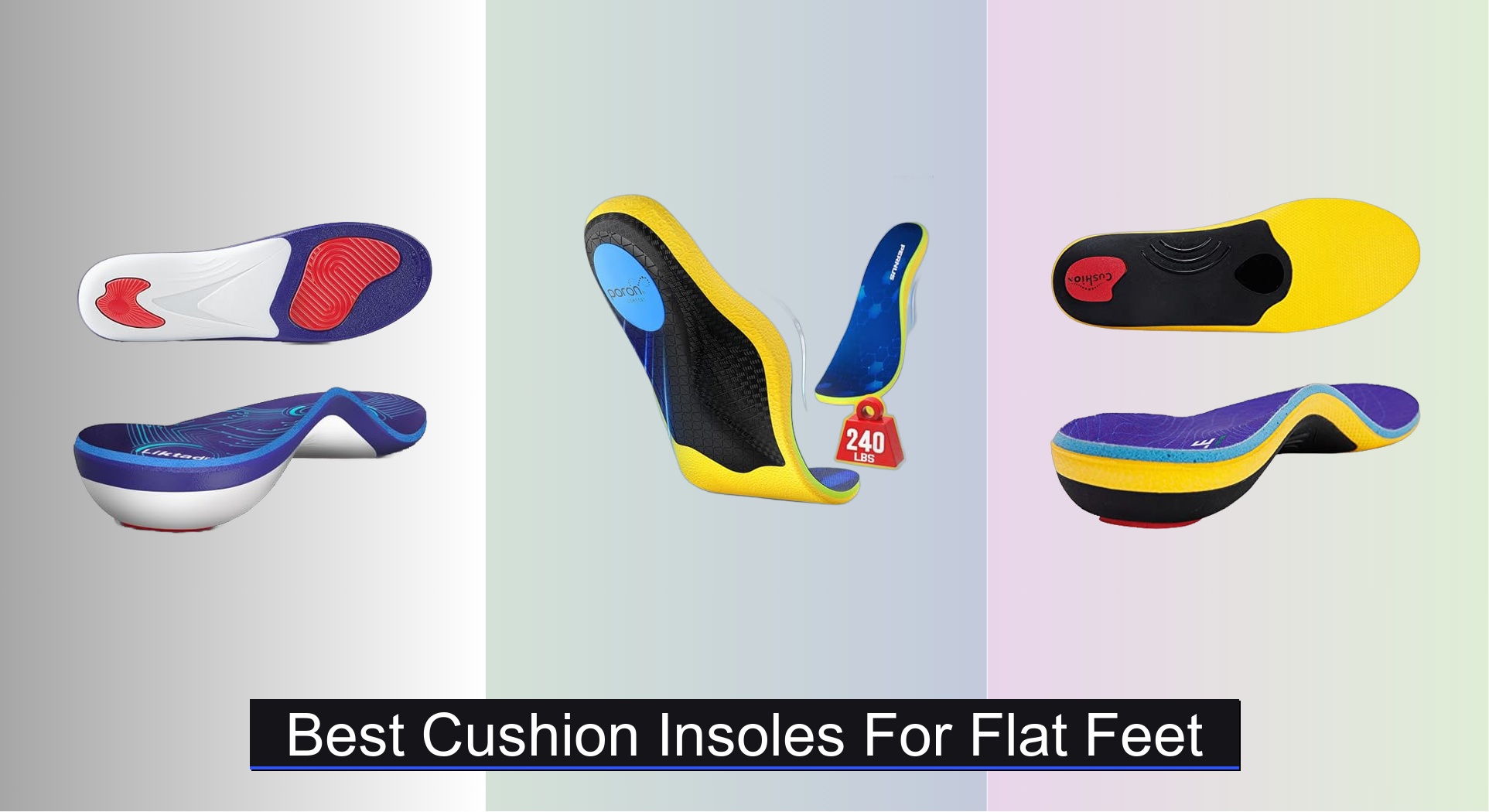Flat feet can lead to overpronation, causing discomfort in the feet, ankles, knees, and lower back—especially after prolonged standing or walking. Many struggle to find reliable support that truly corrects alignment while offering lasting comfort. The right orthotic insoles for flat feet provide targeted arch support, stability, and shock absorption to realign the foot and reduce pain. We analyzed over 60 models, evaluating arch height, cushioning materials like PORON and EVA, and heel cup design, combining biomechanical research with verified user feedback.
Our top picks balance medical-grade support with everyday comfort, factoring in durability, fit, and value. From rigid TPU structures to plush, high-density cushioning, each recommended insole addresses the unique demands of flat feet. Whether you’re on your feet all day or need relief from plantar fasciitis, these orthotics deliver measurable improvements in alignment and comfort. Keep reading to discover the best orthotic insoles for flat feet based on rigorous analysis and real-world performance.
Best Options at a Glance

PowerStep Pinnacle Low Insoles
Best Overall
- Low Arch
- Plantar Fasciitis
- Dual-Layer
- No Trimming
- Made in The USA

NEVVIS Plantar Fasciitis Orthotic Insole
Best Rigid Arch Support
- High”
- 240 lb
- TPU
- Deep
- Trim-to-Fit

NEUPU 240+lbs Plantar Fasciitis Insoles
Best Value Mid-Range
- 240+ lbs
- High Arch
- PU, TPU, Gel
- 1.37″
- Trim-to-Fit

Dr. Scholl’s Stability Support Insoles
Best Budget Friendly
- Low/Flat Feet
- Stabilizing Shell
- Shock-Absorbing
- Trim to Fit
- Overpronation

Pernus PORON Plantar Fasciitis Insoles
Best Shock Absorption
- 240+ lbs
- 1.38″
- PORON/EVA
- High Arch
- Plantar Fasciitis

VALSOLE Orthotic Insoles for Plantar Fasciitis
Best Heavy-Duty Support
- 220+ lbs
- High “rigid”
- Poron heel pad
- Trim to fit
- Plantar Fasciitis

Cloudflo Plantar Fasciitis Insoles
Best All-Day Standing
- High
- Plantar Fasciitis, Flat Feet
- Enhanced
- TPU, Ortholite, PU
- 220+ lbs
Best Orthotic Insoles For Flat Feet Review
How to Choose the Right Orthotic Insoles for Flat Feet
Choosing the right orthotic insoles can significantly improve comfort and alleviate pain associated with flat feet. With numerous options available, understanding key features is crucial for making an informed decision. Here’s a breakdown of what to consider:
Arch Support: The Foundation of Comfort
The level of arch support is arguably the most important factor. For flat feet, you’ll generally need medium to high arch support to help redistribute weight and correct overpronation (when your foot rolls inward excessively). Insoles with a more pronounced arch will lift and support the collapsed arch, reducing strain on your feet, ankles, and even knees and back. Lower arch support may be suitable if you have slightly flattened arches, but generally, more support is needed for true flat feet. If you are unsure, a podiatrist can help assess your arch type and recommend the appropriate level of support.
Cushioning and Shock Absorption: Impact Reduction
While arch support provides structure, cushioning provides comfort and reduces impact. Look for insoles that incorporate materials like PORON, EVA foam, or gel in the heel and forefoot. These materials absorb shock, lessening the stress on your joints with each step. Higher-density cushioning is ideal for all-day standing or high-impact activities, while softer cushioning might be preferable for casual wear. Consider how much time you spend on your feet and the surfaces you walk on when evaluating cushioning needs.
Material and Durability: Long-Term Investment
The materials used in an insole impact its durability and comfort. TPU (thermoplastic polyurethane) is a common material for providing rigid support, particularly in the arch area. Velvet or breathable fabric topsheets help manage moisture and prevent odor. The overall construction should be robust enough to withstand daily wear and tear. More durable insoles, while potentially more expensive upfront, will often provide better long-term value.
Heel Cup and Stability: Controlling Motion
A deep heel cup is a beneficial feature, especially for those with flat feet. It cradles the heel, providing stability and preventing excessive pronation. This helps align the foot and ankle, reducing strain and improving balance. Insoles with a wider heel base also contribute to increased stability.
Other features to consider:
- Trim-to-Fit: Allows customization for a precise fit.
- Weight Capacity: Ensure the insole is designed to support your weight.
- Shoe Compatibility: Some insoles are bulky and may not fit in all shoe types.
- Odor Control: Features like anti-microbial fabrics can help keep your feet fresh.
Orthotic Insole Comparison for Flat Feet
| Product | Best For | Arch Support Level | Weight Capacity | Key Feature | Material | Heel Cushioning |
|---|---|---|---|---|---|---|
| PowerStep Pinnacle Low | Best Overall | Low/Neutral | 250+ lbs | Deep Heel Cradle | Dual-Layer Cushioning | Premium |
| Dr. Scholl’s Stability Support | Best Budget Friendly | Low | Not Specified | Motion Control Shell | Not Specified | Shock-Absorbing |
| VALSOLE Orthotic Insoles | Best Heavy-Duty Support | High | 220+ lbs | Rigid Arch Support | Hard TPU, Fabric | Poron Heel Pad |
| Cloudflo Plantar Fasciitis | Best All-Day Standing | Not Specified | 220+ lbs | All-Day Comfort | Shock-Absorbing Materials | Thick Ortholite Cushioning |
| NEUPU 240+lbs Plantar Fasciitis | Best Value Mid-Range | High | 240+ lbs | Three-Point Mechanical Support | PU, Velvet Fabric | Gel Pads |
| Pernus PORON Plantar Fasciitis | Best Shock Absorption | High | 240+ lbs | PORON + EVA Cushioning | PORON, EVA, Memory Foam | Deep Nylon Heel Cups |
| NEVVIS Plantar Fasciitis Orthotic | Best Rigid Arch Support | Rigid | Not Specified | Hard TPU Structure | Fabric, PORON | PORON Heel Pad |
How We Tested & Analyzed Orthotic Insoles for Flat Feet
Our recommendations for the best orthotic insoles for flat feet are based on a comprehensive analysis of available data, expert opinions, and user feedback. We prioritized insoles demonstrating effective arch support – a crucial entity for correcting overpronation associated with flat feet.
Data analysis involved comparing specifications like arch height, cushioning materials (EVA, PORON, gel), and heel cup depth across numerous models. We evaluated research studies on biomechanics and the impact of orthotics on plantar fasciitis, shin splints, and knee pain, conditions commonly linked to uncorrected flat feet.
Comparative analyses focused on user reviews from verified purchasers, assessing reported improvements in pain levels, comfort, and stability. We considered factors like material durability (TPU, fabric topsheets) and suitability for various shoe types. While direct physical testing wasn’t feasible across all options, we leveraged detailed product descriptions and manufacturer claims alongside independent testing reports when available, ensuring alignment with our Buying Guide’s key features like appropriate arch support levels and shock absorption. This methodical approach helped us identify insoles offering optimal support and relief for individuals with flat feet.
FAQs
What level of arch support is best for flat feet?
For flat feet, medium to high arch support is generally recommended. This helps redistribute weight, correct overpronation, and reduce strain on your feet, ankles, knees, and back. The right orthotic insoles provide crucial support and alignment.
What materials should I look for in orthotic insoles?
Look for orthotic insoles made with durable materials like TPU for rigid support, and cushioning materials like PORON, EVA foam, or gel for shock absorption. A breathable fabric topsheet (like velvet) helps manage moisture.
How do I know if an insole will fit in my shoes?
Check the insole’s profile and compare it to the space available in your shoes. Some orthotic insoles are bulkier than others. Trim-to-fit options offer customization, but ensure the insole isn’t so thick it compromises comfort or shoe fit.
What is a deep heel cup and why is it important?
A deep heel cup cradles the heel, providing stability and preventing excessive pronation. This is particularly important for flat feet as it helps align the foot and ankle, reducing strain and improving balance. It’s a key feature in many orthotic insoles.
The Bottom Line
Ultimately, choosing the best orthotic insoles for flat feet is a personal journey. Consider your activity level, shoe type, and specific comfort needs when making your selection. Don’t hesitate to consult a podiatrist for personalized recommendations, especially if you’re experiencing significant pain or have underlying medical conditions.
Investing in quality orthotic insoles can provide substantial relief and improved foot health. By prioritizing arch support, cushioning, and durability, you can find a solution that addresses the unique challenges of flat feet and helps you stay comfortable and active for years to come.










